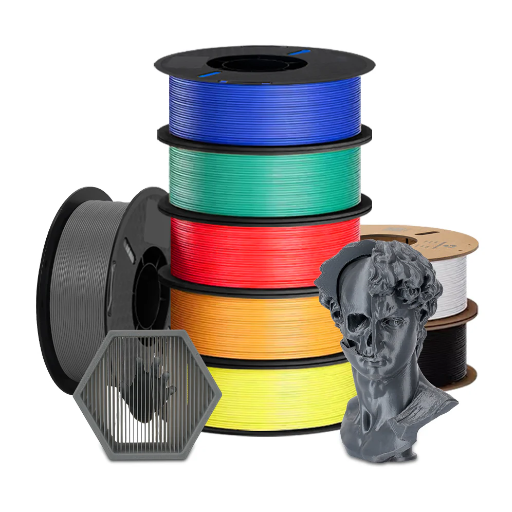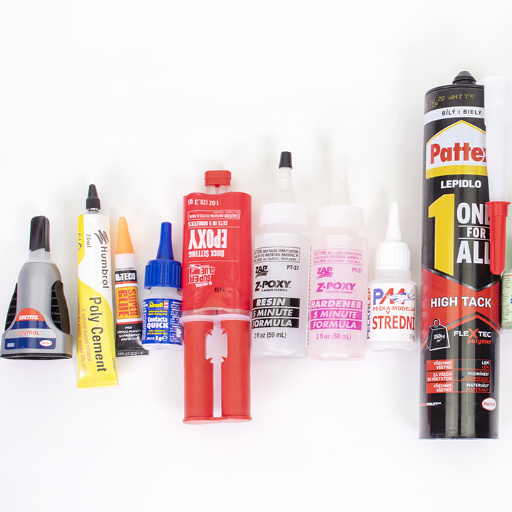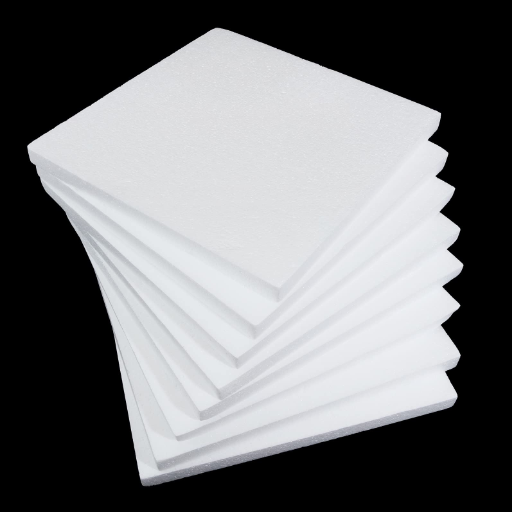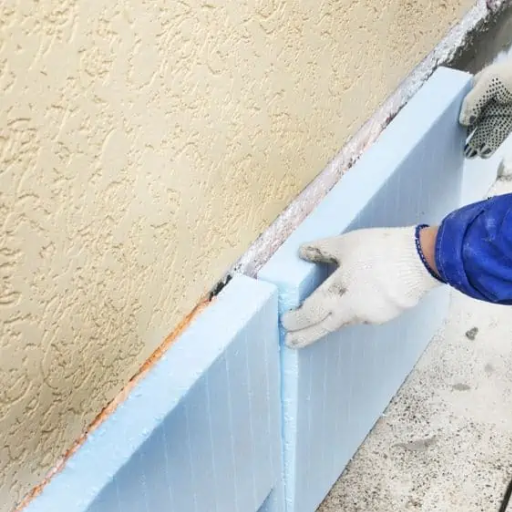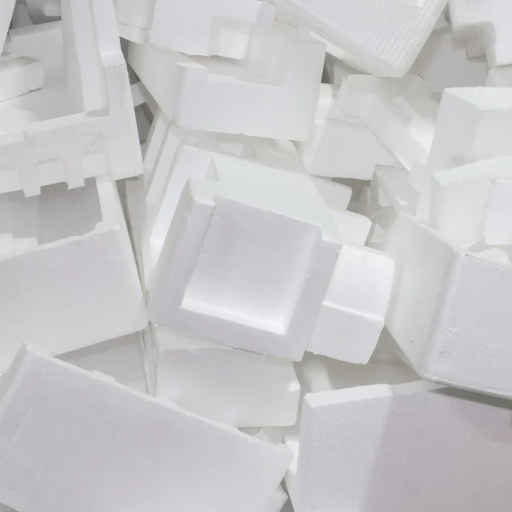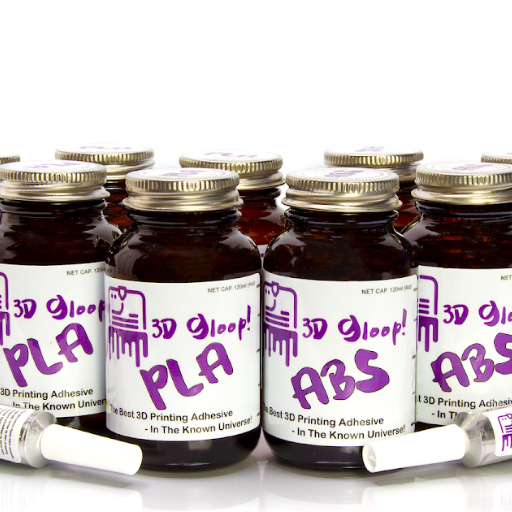Whether dealing with broken objects, complex repairs, or crafts that need patience, super glue is often the first idea that comes to one’s mind. In fact, super glue is a very versatile adhesive but may not necessarily be the best glue for all applications. The factors that super glue’s effectiveness is reliability on include: the nature of the materials, the strength of the bond, resistance to the environment, and convenience. This article goes into detail looking for different types of adhesives that work with various demands other than super glue.
What Are the Best Super Glue Alternatives?

- Epoxy Adhesives: For a durable solution, these epoxy adhesives can replace super glue. They are quite flexible as they are made of two parts: a resin, and a hardener which needs to be combined before use. Once cured, epoxies are able to strongly bond a myriad of materials to one another, from metal and glass to wood and plastic. This makes them great for intense repairs or construction work.
- Polyurethane Adhesives: Polyurethane adhesives are ideal with works containing porous constituents like wood, foam and leather due to their good flexibility and water resistance. They provide strong bonds which is very useful for works exposed to moisture or spanning temperatures.
- Silicone Sealants: They are ideal for gluing glass and other ceramics and non-porous materials. It is equally proficient in the use of sealing or gluing because of its water- and heat-proof nature, rough temperature resistance, and bendable long term hold.
- Double-Sided Acrylic Foam Tape: Where lightweight applications are concerned, double sided acrylic foam tape is an easy yet efficient solution as a cleaner adhesive. Particularly for fastening light objects onto smooth metal, plastic or glass surfaces, it works remarkably well without any tools.
These alternatives were tailored to be best suited to specific needs and materials.
Epoxy vs. Super Glue: Which is Better?
In deciding the application of either epoxy or super glue, bond strength, required materials, and environmental durability are some of the factors to consider. For projects strenuous in nature, epoxy would outperform super glue due to its two component system which consists of a resin and hardener. The epoxy’s chemical reaction with the binder guarantees a good bond in projects demanding exceptional strength. Indoors and outdoors, epoxy can also be used because it bonds metals, wood, and composites while withstanding high temperatures and water exposure.
Cyanoacrylate adhesives, also known as super glue, works best under the light bonding requirements. Cyanoacrylate adhesive works best on non porous surfaces such as plastic, ceramic and rubber since it forms a strong initial bond in mere seconds. Unlike epoxy however, super glue is not very versatile. It is prone to moisture and heat, as well as environmental stress over time which makes it less durable in the long run.
Understanding the specific requirements for your project such as materials, conditions and the glue itself, allows you to make a more informed choice. That being said, strongly demanding tasks and projects needing resistance to external factors will perform better with epoxy, while super glue works better for easy and lightweight tasks.
Biodegradable Options for Eco-Friendly Repairs
Biodegradable adhesives are becoming more and more sought out for eco-friendly repair jobs. The materials used to synthesize such adhesives are non-toxic and polymers such as starches, proteins, or cellulose-based. Good examples are adhesives designed to bond wood, paper, and other organic materials as they fall under a range of light to medium-duty repairs.
Developments in technology have improved the effectiveness and sustainability of biodegradable adhesives. For example, the incorporation of renewable raw materials has been blended with stronger bonding capabilities resulting in some adhesives performing like synthetics in certain applications. Additionally, some products in the market harness natural rubber or plant-based resin which aids in bonding as well as eco-friendliness.
When choosing one for a specific purpose, factors such as the working environment and materials to be bonded should be considered. Although these adhesives do not perform as well as synthetic products in high heat and high moisture conditions, the adhesives preform great for indoor use and low stress maintenance tasks. Furthermore, using these types of adhesives can lower the carbon footprint of the repair and enhance responsible approaches to resource consumption and waste generation.
How Do Different Adhesives Bond to Various Surfaces?

Adhesive bonds to surfaces via mechanical and/or chemical adhesion, or a combination of both. For mechanical adhesion, the adhesive fills irregularities on a surface like pores, capturing them physically as a lock. This works best with rough surfaces such as fabrics or wood. Chemical adhesion has stronger attraction with smooth materials like glass, metal and plastic. The reason being it relies on adhesive forces and the molecular attraction of the adhesive and surface. The type of adhesive also has to match the type of surface; epoxy works well with metals while PVA glue bonds easily with porous materials like paper and wood. Surface preparation such as cleaning and roughening will increase adhesion while providing a reliable bond.
Understanding Bonding for Plastic and Wood
The plastic and wood bond requires that distinct characteristics of both substrates are chosen with adequate materials and surfaces. The most challenging part are plastics, especially the non-porous ones like polyethylene and polypropylene because they are low energy surfaces. This means they cannot have adhesive and face penetrating bond. As a result, enhanced surfaces through treatments such as plasma activation, flame treatment, or even sanding the surface will be done to raise surface energy to make ensure the bond will perform well.
As wood is a highly porous material, adhesives must possess the ability to access fibers within the surface of the wood to form a secure bond. Polyurethane adhesives are touted for plastic to wood bonds due to their adaptability and ability to bond well to porous and non-porous materials. On the other hand, for harsh environments such as in the assembly of furniture or structural repairs, epoxy adhesives will be better due to their strong mechanical bond and great chemical resistance. The strength of the bond is also affected by the temperature and the amount of time so called curing time, as well as the environmental factors which go the adhesive’s durability over time.
Surface Preparation for Optimal Adhesion
Achieving the best optimal stackability of the exposed materials and achieving long-term durability requires proper surface preparation as a critical factor. Cleaning contaminants interferes with adhesive bonding like dust, residue, grease and oil needs to be get rid of surfaces. To make a metallic surface, one can use abrasion, sandblasting or chemical etching because these methods improve surface roughness increasing better mechanical interlocking. Non porous plastic surfaces often require chemical primers or plasma treatment to enhance the required surface energy of better adhesive wetting.
Superficially monitored moisture content on surfaces is important to track, as too much water can disrupt the curing process of particular adhesives, especially those formulated with moisture-sensitive woeful chemistries like polyurethane. Furthermore, maintaining uniform surface flatness and taking away protrusions helps mitigate potential weak areas within the bond line. Following these recommendations along with adopting appropriate techniques for substrate surface preparation would let one achieve remarkable performance improvements in adhesion while significantly reducing the risk of structural failure issue as diverse levels of stress may be applied.
Choosing the Right Glue for Ceramics and Foam
In the context of ceramics and foam, the intrinsic properties of both materials should inform the selection of bonding agents. Ceramics are dense and rigid structures, thus they need adhesives capable of supporting high shear and tensile strengths to endure the high-stress demands and durable life-cycle needed. Furthermore, foam, a lightweight and compressible structure, presents additional issues due its porous surface, which makes adhesion extremely complicated.
Ceramics-to-foam applications have undergone treatment with epoxy resin adhesives, as these types of glue are well known to have exceptional bonding strength. In addition to bonding strength, epoxies have resistance to environmental factors and can perform well alongside other materials. While polyurethane does not display the same degree of resistance as epoxies, it has unrivaled bonding strength to both open and closed porous surfaces which makes it suitable for ceramics and foam. An important note to consider is the degradation/stability of the adhesive in foam materials. In the case of solvent-based adhesives, the chemical stability could pose a problem. Bonding reliability will improve by conducting preliminary adhesion testing with expected temperature and humidity ranges.
What Are the Advantages of Using Epoxy Adhesives?

Epoxy adhesives have important characteristics which are reasons they are widely used as such:
- High Bond Strength: Epoxy adhesives are strong and durable i.e. capable of enduring significant loads, forces and stresses.
- Versatility: These adhesives have the ability to bond with metals, plastics, wood, ceramics etc. therefore they can be used across various industries.
- Chemical and Environmental Resistance: Epoxy adhesives are highly resistant to chemical, moisture and extreme climatic temperature guarantees dependability in harsh conditions.
- Longevity: Their sturdiness mean they can be used for a long time without the need for constant reaplication or repairs.
- Precision Application: Due to the low degree of shrinkage during curing, epoxy adhesives permit very fine and precise bonding.
These properties together with other make them the most ideal epoxy adhesives for harsh conditions such as those found in the aerospace, automotive and construction industry.
Two-Part Epoxy: How It Works
Two-part epoxy adhesives are activated by a chemical reaction between a resin and hardener called component A and B. Mixing initiates an exothermic reaction after the two components are combined which causes the liquid adhesive to solidify. This curing heats transforms the liquid adhesive into a rigid thermoset polymer matrix which performs incredibly high bond strength.
Two-part epoxies curing time is affected by formulation, ambient temperature, and mixing ratio. For precise application, each manufacturer sets very detailed specifications such as pot life, working time, and full cure time which must be adhered to. Specialized applications may require advanced formulations that allow rapid curing in minutes, or prolonged working times for intricate assemblies.
Two-part epoxies can aid adhesion of metals, ceramics, composites, and some plastics with powerful adhesion and mechanical interlocking. Notably, these adhesives dominate resistant trophy to other environmental factors such as chemistry, heat, and mechanical stress, which is why they are critical in aerospace and electronic construction industries.
Durability and Curing Time of Epoxy vs. Super Glue
In comparison to super glue (cyanoacrylate), epoxy adhesives possess greater durability and bond strength as a result of slower bonding procedures. At the same time, exposure to severe temperatures exceeding -60°C withstands chemicals and moisture strongly. Epoxy adhesives alongside super glue posses dramatic differences in cured polymer behavior. Curing epoxy results in a cross-linked thermoset polymer providing enduring advantage in structural applications.
On the other hand, super glue is preferred for its ability to cure in seconds to minutes, depending on the surface material and conditions. Though, super glue does not have a high level of strength when used on lightweight fixes, and certainly does not stand up to epoxy when it requires heavy stress, high temperature, or extended time submerged in water. As an example, super glue becomes brittle with time and can weaken from thermal cycling or UV light. This mitigates its best use to temporary applications without structural loads where endurance is not essential.
In the end, deciding which adhesive to use, epoxy or super glue, depends on the specific details about environment, the site location and load-bearing requirements, and how much time is given before the bond requires the adhesive cure.
Are There Craft-Friendly Alternatives to Super Glue?

Indeed, super glue can be replaced with many craft-friendly alternatives, specific to the materials and requirements of the project. Stick and tacky glue options are suitable for lighter items such as paper and cardstock due to their simplicity and smooth finish. Stiff free adhesion of textiles is done with specialized fabric glue designed for this purpose, aiding in fabric-based crafts. Strong bonding with wood is achieved carpenter-friendly with wood glue. Quick setting bonds for most projects are provided by hot glue guns for plastics or mixed materials, making them versatile. These options are often preferred for intricate or delicate work due to being safer than super glue.
Best Glues for Cardboard and Paper Crafts
Its importance to select appropriate types of glue specific to lightweight materials like cardboard and paper to guarantee accuracy and strength when doing cuts. For general use, PVA glue (polyvinyl acetate) is very convenient as it is strongly adhesive, non-toxic, and does not damage the majority of the paper and cardboard surfaces. PVA glue is ideal for projects that require quick drying times, as it provides a thicker consistency than water, enhancing bond strength or heavier. For detailed design work that requires precision, glue sticks present unique advantages in that they are easy to apply and clean. However, while they’re lightweight, as a whole, they are best suited for lighter materials. During the construction of larger cardboard works, spray adhesives offer even coverage on all surfaces which is good for mounting or layering. Furthermore, acid-free adhesives are perfect for archival or professional work as they do not allow the materials to discolor and damage over time. Each glue is unique in its own way and fulfills a needs depending on the type of craft project one is working on.
Using Hot Glue Guns for Quick Repairs
Hot glue guns are particularly useful for offering quick and dependable repairs for an assortment of materials. They operate by heating solid adhesive sticks to liquid form as they are cooled quickly. The items that require hot glue are wood, plastic, fabric, and even ceramics as they require a lot of heat. Modern electric glue guns can set different working temperatures, which makes it possible to work on robust and delicate materials without damaging them. In addition, the development of the formulas of adhesive sticks made it possible to use them for more specialized tasks like sealing heavy duty materials or making flexible joints. Sticks of glue can be spouted into a joint quickly without the need to re-align the parts provided the application pressure is constant and the surfaces are clean. In spite of its speed and ease of hot melting glue guns, safety measure should be taken to minimize the danger posed by hot glue to the skin. These tools have been used across numerous professions as well as in odd jobs due to their ease of use paired with dependable results.
Silicone Adhesive: A Versatile Craft Solution
The adaptability, long-lasting features, and efficient working of silicone adhesive is known globally. It ranges from crafts to construction work. Most of its effectiveness is due to its main ingredient, silicone polymer, as it provides the silicone adhesive with rubber like molecular consistency which makes it very easy to withstand extreme moisture, radiation, and exposure to ultraviolet rays. It is primary known for its chemical bonds because it easily bonds with non-porous materials like glass, metal, plastic and ceramics as where other ordinary glues fail to perform.
Cultural artisans find silicone adhesive very useful because of its unique properties to bond Silicones together in such a way that the resulting bond will be transparent, waterproof, weather-resistant, and will not disintegrate with time. Along with other types of silicone adhesive, many silicone adhesive products have become safe for the environment which can be used for family projects. It is also used as a filler to plug gaps and to prevent the passage of water in the complex designs of crafts and because of rubber like molecular structure, they do not break under strain or movement. It serves as an excellent tool that is a requirement for both amateur and professional craft lovers in today’s digitally advanced world.
How to Properly Use and Store Adhesives for Maximum Effectiveness?

Ensure the surfaces to be bonded is clean dry and free from dust grease or debris. Follow manufacturer’s instructions for adhesive application. Over-application may lead to weakened bonds and an increased time to cure. Additionally, environmental factors such as temperature and humidity should be within the recommended ranges for optimal adherence.
In terms of long-term storage, adhesives, along with their supporting documentation like product labels must be kept in the manual container and a cool windowless room. In addition, they should be shielded from sunlight and extreme temperatures. Although some adhesives like cyanoacrylate are more resilient with regards to their storing conditions, product labels must still be adhered to. Because adhesives are volatile, they should be kept away from children and flammable materials to prevent unintended contact with explosive conditions or degradation of the material.
Understanding Curing Time and Full Cure Duration
The curing time of an adhesive is the time an adhesive takes to set enough to be able to hold pieces of a work together under light mechanical load. It is often referred to as “initial cure” or “working time”. It varies greatly with the kind of adhesive used, temperature, humidity, and even the materials to be joined. On the other hand, full cure duration is the entire time an adhesive takes to attain maximum strength and chemical resistance. For example, many epoxies take from 24 to 48 hours to fully cure while some polyurethanes can take up to a week under standard conditions. Substrate porosity and clamping pressure also impact performance. Typically, such durations are provided by manufacturers with detailed instructions, stressing these processes are critical to bond strength and durability.
Tips for Storing Adhesives and Preventing Drying Out
Effective adhesives are products which have not been improperly stored. In most cases, storage instructions include keeping the product at a certain temperature and humidity level. Excessive warmth could cause the adhesive to cure too quickly or degrade, so a cool and dry place, free from sunlight is ideal. Given that most manufacturers have a set 40°F to 77°F (5°C to 25°C) range for storing adhesives, they should also be followed unless stated otherwise on the product label.
To prevent adhesives from drying out, ensure that containers are tightly closed after each use. For tube-based adhesives, expelling all air before capping can reduce drying and oxidation. Moreover, transferring unused portions into airtight secondary containers helps decrease environmental exposure. Furthermore, storing adhesives upright diminishes the likelihood of leaks and uneven air exposure.
Expiration dates are just as important because adhesives, like all other chemicals, change over time, which reduces effectiveness. Pouches of desiccants and or silica gel can be used to absorb any excess water vapors reducing the chances of clumping or curing. As such, users will be able to maintain the intended applications and stabilize the adhesive by following the aforementioned instructions.
Reference Sources
-
A Non-Toxic Superglue I Tested, Plus Alternatives – Discusses low-VOC, low-odor glue options as alternatives to super glue.
-
Eco Friendly Glue Alternatives – Highlights a biodegradable superglue replacement made from re-engineered polymers.
-
Superglue Alternative Made from Soya – Explores a biodegradable glue derived from soya bean oil with high-strength bonding capabilities.
Frequently Asked Questions (FAQs)
Q: Can I use acetone to remove superglue from surfaces?
A: Yes, acetone can effectively remove superglue from surfaces. It acts as a solvent that breaks down the adhesive, making it easier to clean up.
Q: What is the difference between one glue and two-part epoxy?
A: One glue typically refers to single-component adhesives like superglues, which cure quickly. Two-part epoxy requires mixing a resin and hardener, providing a stronger bond for large surfaces and gap filling.
Q: Are there sustainable alternatives to traditional superglues?
A: Yes, there are sustainable adhesives available that use natural ingredients and have lower VOC levels. These options are better for the environment while still providing strong bonding capabilities.
Q: How long does it take for epoxy glues to cure compared to superglues?
A: Epoxy glues usually take 24 hours to reach full strength, while superglues can set in seconds or minutes. However, epoxy provides a more durable bond for larger projects.
Q: Can I use baking soda with superglue for gap filling?
A: Yes, adding baking soda to superglue can enhance its gap-filling properties. The mixture hardens quickly and can be polished for a smoother finish.
Q: What types of glues and adhesives are best for woodworking projects?
A: For woodworking, Titebond and other wood glues are highly recommended. They provide strong bonds and remain flexible after curing, making them ideal for various wood applications.
Q: How do I choose the right adhesive for large surfaces?
A: When choosing an adhesive for large surfaces, consider using two-part epoxies or construction adhesives. These options provide strong bonds and are designed to handle larger areas effectively.
Q: What should I consider regarding the odor or VOC levels in adhesives?
A: When selecting glues and adhesives, it’s important to check for VOC levels, especially in indoor applications. Many sustainable adhesives have lower VOC emissions and less odor, making them safer to use.
















